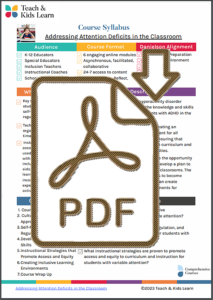Getting Started with Project-Based Learning, Grades K-12
Course Description
| Every day, teachers look for ways to meet all of their content objectives in a way that is meaningful, purposeful, and engaging to their students. Project-based learning not only provides meaningful, purposeful, and engaging opportunities for learning but also helps students to develop the skills needed for college and career readiness, develop deep conceptual understanding, and apply what they are learning in the classroom to tasks and problems. |
The goal of this PBL Course is to learn how to create an effective and engaging PBL unit to help your students become effective and active learners. After learning how to design and build a comprehensive PBL unit, you will engage students in equitable learning in a student-centered environment. The course includes instructional strategies such as linking standards to unit outcomes, identifying opportunities for inquiry, and establishing project milestones. Educators will also learn to use formative and summative assessments to determine learning mastery. Your students will grow capable investigators, thinkers, and communicators by applying scaffolding techniques, inquiry learning strategies, and metacognition.
Course Agenda
|
| Course Syllabus |
|
Comments from Teachers
“Great ideas for developing a PBL unit and how to manage it. Very excited to try strategies in upcoming year.”
“I enjoyed the courses I took this summer. They were engaging and many of the teachers provided informative feedback. I liked the discussions to share my ideas and to learn from others.”
Danielson Teacher Framework Course Alignment


